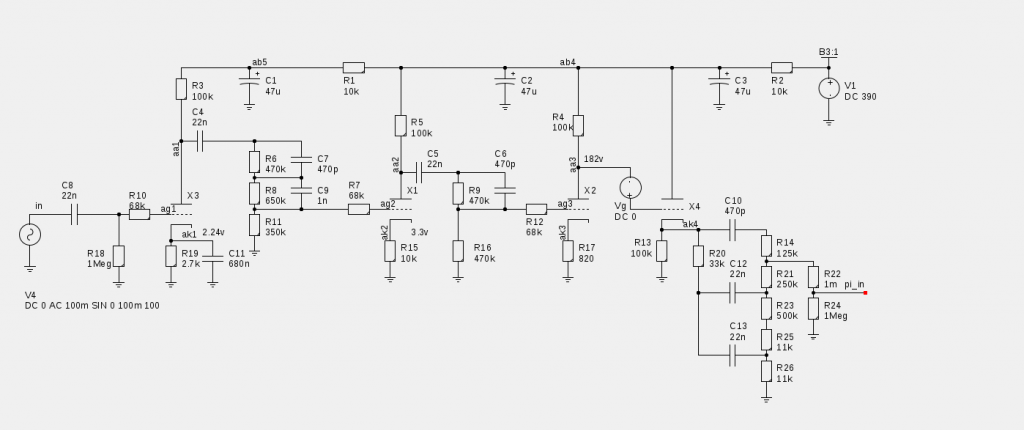[QUOTE=NateS;340434]Ok, here's my analysis of the stock preamp, 100mV input, volume at 35% (linear), master cranked, and TMB at 5-5-5. (It doesn't look like anything close to 10db loss)

I don't see how you get 140V at the output at pi_in!!!! This is a typical circuit I use also. The output of X4 is about 150Vpp max for aa3 at 225V. The tone stack attenuates at least half even with treble and mid cranked up. and then you have the divider of R22 and R24, so you have only about 30V best case at the pi_in. I got into problem because I use it at treble and mid at half. It is divided by 3 just on the tone stack. I got only 50V out of the junction between R14 and R21.
In fact I scoped the points from ak4 to pi_in point to point. Are you based on simulation or real measurement?

I don't see how you get 140V at the output at pi_in!!!! This is a typical circuit I use also. The output of X4 is about 150Vpp max for aa3 at 225V. The tone stack attenuates at least half even with treble and mid cranked up. and then you have the divider of R22 and R24, so you have only about 30V best case at the pi_in. I got into problem because I use it at treble and mid at half. It is divided by 3 just on the tone stack. I got only 50V out of the junction between R14 and R21.
In fact I scoped the points from ak4 to pi_in point to point. Are you based on simulation or real measurement?

Comment